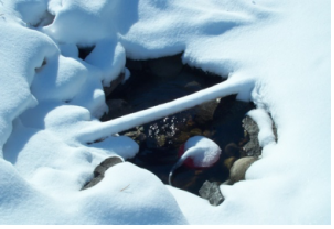When the sun comes out and the temperature coaxes you out into the yard, it’s tempting to just start working away to make your lawn look great again. The first step should always be a thorough raking.
Timing is everything though because you don’t want to do more harm than good.
Make sure that when you walk across the lawn, you aren’t leaving footprints. This is a sure sign that there is still too much water in the ground to rake your lawn. Once the blades of grass spring back without leaving footprints, you are going to have much more success with a vigorous raking.
You should also do your raking while much of the lawn is still brown as opposed to bright green, to avoid damaging new roots. Like I said, timing is everything, so just because the sun is out and temperatures are rising fast, doesn’t mean that your lawn is ready for a heavy duty workout.
A good rule of thumb to go by is, don’t rake your lawn until it is visibly growing.
For those who choose to thatch their lawns, hold off in the early spring, as the ground is simply too wet.
Early spring is the perfect time to clean up any debris left over from fall or winter, such as sticks and wet leaves. These will lie on top of the grass and potentially not only hinder the new growth of your lawn, but will contribute to mould building up underneath, where the moisture will be most prominent.
With a few simple steps you can attain a lawn that is healthy, as well as environmentally beneficial.
Prepping in the previous fall will always give you a huge head start to a great lawn in the spring.
If you have noticeable dead areas where you are convinced that grass won’t be coming back, patching these areas now could be your best bet. If these areas have mushy clumps of dead grass you may have to dig out these areas to a depth of about an inch and replace with a peat moss, soil and grass seed mix, but don’t be too anxious to go to this extreme, as most times the lawn will manage to heal itself.
By mixing a heavy dose of peat moss to some soil, then adding a good quality grass seed such as Kentucky blue grass, you will have the best chance for germination in the moisture soaked ground. These patches should overlap the existing healthy areas just a little bit so that they will blend in nicely once the grass seed germinates.
If you use a fall fertilizer and add some grass seed, you will have a smaller chore and more success come spring. Once you are able to actually mow the lawn, by using a mulching lawnmower, you will keep all the nutrients right where they belong, which also saves you from needing to fertilize as often.
Don’t let the clippings build up more than half an inch in the lawn though.
The warmer the weather, the faster the clippings decompose.
Wetter, cooler weather doesn’t allow the clippings to deteriorate as fast, so they tend to build up.
Once the days get hotter, If you choose to water your lawn, doing so in the morning is preferable, and always water longer and less frequently. This will allow the roots to grow deeper, therefore making them stronger.
As for weeds, if you only have a few then it’s best to remove them individually by hand before they produce seeds and spread. If you tend to have many small weeds scattered throughout your lawn, an organic fertilizer is much healthier for your environment, especially if children will be playing on your lawn. With an older or sparse lawn, your best success will be with aeration, over seeding and fertilizing, followed by regular watering.



